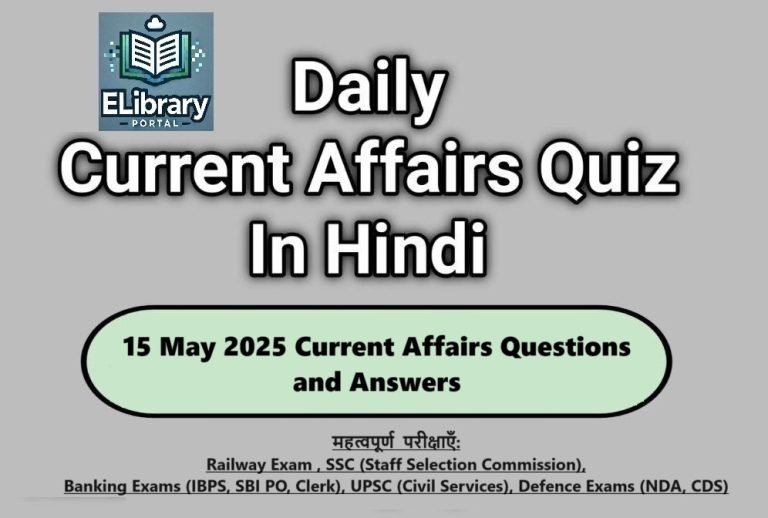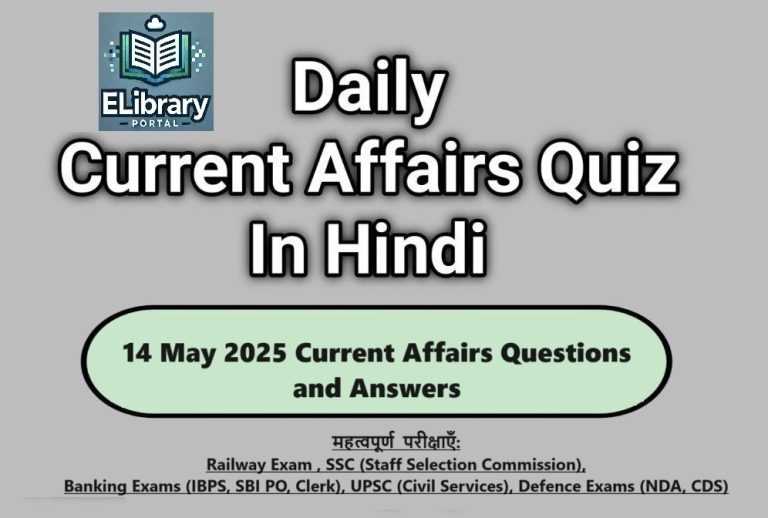Catalysis is a core concept in chemistry that plays a pivotal role in various chemical, industrial, and biological processes. It involves the acceleration of a chemical reaction by a substance known as a catalyst, which remains unchanged at the end of the reaction. Catalysis not only enhances reaction rates but also allows for more energy-efficient and selective processes, making it indispensable in modern science and technology. This discussion will provide an in-depth exploration of catalysis, including its types, mechanisms, applications, and future directions.
1. Introduction to Catalysis
Catalysis is the process by which a catalyst accelerates a chemical reaction without being consumed in the reaction. Catalysts achieve this by providing an alternative reaction pathway with a lower activation energy. In a typical reaction, reactants must overcome a specific energy barrier, known as the activation energy, to transform into products. By lowering this barrier, catalysts increase the rate at which products are formed, without altering the thermodynamic equilibrium of the reaction. Thus, catalysis allows reactions to proceed faster or at lower temperatures, reducing energy requirements and often increasing yield.
Catalysis is crucial in various fields, including:
- Industrial chemistry, where catalysts are used in the production of fuels, chemicals, and pharmaceuticals.
- Environmental science, for reducing emissions and transforming pollutants.
- Biology, as enzymes are natural catalysts in metabolic processes.
2. Types of Catalysis
Catalysis can be broadly classified into two main types: homogeneous and heterogeneous catalysis, with an additional category for biological catalysis.
2.1 Homogeneous Catalysis
In homogeneous catalysis, the catalyst is in the same phase as the reactants, typically in the liquid phase. This allows for uniform mixing and molecular-level interactions between the catalyst and the reactants, resulting in efficient and rapid reactions. Some examples include:
- Acid and Base Catalysis: Acids and bases are common homogeneous catalysts, particularly in reactions involving proton transfers. Acid-catalyzed reactions include esterification and hydrolysis, while base-catalyzed reactions include aldol condensations.
- Organometallic Catalysis: Metal complexes, especially those containing transition metals, are widely used in homogeneous catalysis. Examples include the Wilkinson’s catalyst (a rhodium complex) for hydrogenation and the Grubbs catalyst for olefin metathesis. These reactions are vital in the synthesis of fine chemicals and pharmaceuticals.
The main advantage of homogeneous catalysis is its high selectivity and activity, which are achieved because the catalyst can interact with reactants at the molecular level. However, it also has limitations, such as difficulties in separating and recovering the catalyst after the reaction, as well as potential issues with catalyst stability.
2.2 Heterogeneous Catalysis
In heterogeneous catalysis, the catalyst is in a different phase than the reactants, typically solid catalysts with gaseous or liquid reactants. This phase difference allows for easy separation and recovery of the catalyst, which is a significant advantage for industrial applications. Some examples include:
- Catalytic Cracking: Used in petroleum refining, catalytic cracking breaks down large hydrocarbon molecules into smaller, more valuable molecules like gasoline and diesel. Zeolites, aluminosilicate minerals with a porous structure, are commonly used as catalysts.
- Hydrogenation Reactions: Heterogeneous catalysts such as nickel, platinum, and palladium facilitate hydrogenation reactions, where hydrogen is added to unsaturated compounds like alkenes, commonly used in food processing and chemical manufacturing.
- Catalytic Converters: In automotive catalytic converters, metals like platinum, palladium, and rhodium are used to convert toxic gases from exhaust emissions into less harmful substances, such as converting carbon monoxide into carbon dioxide.
Heterogeneous catalysts work by adsorbing reactant molecules onto their surfaces, where the reaction takes place. The products are then desorbed from the surface, leaving the catalyst unchanged. While heterogeneous catalysis has the advantage of easy recovery and reuse, the reaction rates are often slower than those in homogeneous catalysis due to limitations in surface area and mass transfer.
2.3 Biological Catalysis (Enzymatic Catalysis)
Biological catalysis, also known as enzymatic catalysis, refers to the role of enzymes as catalysts in living organisms. Enzymes are highly specific proteins that accelerate biochemical reactions, essential for sustaining life. Examples of enzymatic catalysis include:
- Digestion: Enzymes such as amylase, lipase, and protease catalyze the breakdown of complex food molecules (carbohydrates, fats, and proteins) into simpler substances for absorption.
- DNA Replication: DNA polymerase enzymes catalyze the synthesis of new DNA strands by adding nucleotides to a growing DNA chain.
- Cellular Respiration: Enzymes like ATP synthase facilitate the production of ATP, the energy currency of the cell, by catalyzing reactions in the mitochondria.
Enzymatic catalysis is known for its remarkable specificity, efficiency, and ability to operate under mild conditions (near-neutral pH, ambient temperatures). This specificity is due to the unique active sites of enzymes, which bind selectively to specific substrates.
3. Mechanisms of Catalysis
Catalysis mechanisms vary depending on the type of catalyst involved, but they generally involve the following steps:
- Adsorption: For heterogeneous catalysts, reactant molecules adsorb onto the catalyst surface, forming an interaction that lowers the activation energy.
- Activation of Reactants: The catalyst may weaken or distort bonds in the reactant molecules, making it easier for them to undergo reaction.
- Formation of Intermediates: A reaction intermediate may form when the reactant interacts with the catalyst. In homogeneous catalysis, these intermediates are often complexes with metals or organometallic catalysts.
- Desorption: In heterogeneous catalysis, the product molecules desorb from the catalyst surface, freeing the active sites for further reactions.
In enzymatic catalysis, the active site of the enzyme binds specifically to the substrate, forming an enzyme-substrate complex. This complex undergoes a series of steps that transform the substrate into the product, which then dissociates from the enzyme.
4. Key Concepts in Catalysis
Catalysis is governed by various principles and concepts that influence its efficiency, selectivity, and activity:
- Turnover Frequency (TOF): TOF is a measure of the catalytic activity, defined as the number of reactant molecules transformed per active site per unit time. High TOF values indicate an efficient catalyst.
- Activation Energy Reduction: Catalysts work by providing an alternative pathway for the reaction with a lower activation energy, which increases the reaction rate.
- Selectivity: Selective catalysts facilitate the formation of desired products over undesired byproducts, which is critical in many industrial processes.
- Catalyst Deactivation: Catalysts may lose activity over time due to poisoning (when impurities block active sites), sintering (loss of surface area at high temperatures), or leaching (loss of catalyst components in homogeneous systems).
5. Applications of Catalysis
Catalysis has broad applications across multiple industries:
5.1 Industrial Applications
- Ammonia Synthesis (Haber Process): The production of ammonia (NH₃) from nitrogen and hydrogen uses an iron-based catalyst and is fundamental in the fertilizer industry.
- Petrochemical Industry: Catalytic processes, such as catalytic cracking and reforming, are essential for refining crude oil into valuable fuels and chemicals.
- Pharmaceutical Industry: Homogeneous and enzymatic catalysts are used in synthesizing active pharmaceutical ingredients with high specificity and efficiency.
- Polymerization: Catalysts are critical in polymer production, such as using Ziegler-Natta catalysts for producing polyethylene and polypropylene.
5.2 Environmental Applications
- Pollution Control: Catalytic converters reduce harmful emissions from vehicles, while catalysts in industrial settings help control pollutants like sulfur dioxide and nitrogen oxides.
- Green Chemistry: Catalysis enables environmentally friendly reactions that produce fewer byproducts, reduce energy consumption, and minimize waste, making it integral to sustainable chemical processes.
5.3 Biological and Biomedical Applications
- Diagnostics and Therapeutics: Enzymes and other catalytic proteins are used in diagnostic assays and therapeutic treatments. For example, catalase, an enzyme that breaks down hydrogen peroxide, is used in various medical and research applications.
- Drug Delivery: Enzyme-based systems are employed in targeted drug delivery, where the drug is released in response to specific biochemical signals.
6. Challenges in Catalysis
Despite its importance, catalysis faces several challenges:
- Catalyst Deactivation: Many industrial catalysts lose activity over time due to poisoning, sintering, or leaching, requiring frequent replacement or regeneration.
- Selectivity and Efficiency: Achieving high selectivity and yield, especially in complex reactions, remains challenging.
- Environmental and Cost Considerations: Certain catalysts, especially those based on precious metals (like platinum and palladium), are expensive and environmentally taxing. Developing cost-effective and sustainable alternatives is a major area of research.
7. Future Directions in Catalysis
Advances in catalysis are essential for addressing global challenges in energy, environment, and health. Emerging trends include:
- Nano-catalysts: Nanomaterials, such as nanoparticles and nanofibers, exhibit unique catalytic properties due to their high surface area and potential for tailored reactivity.
- Green Catalysis: Green chemistry approaches focus on developing catalysts that use renewable resources, generate less waste, and require less energy, which is critical for sustainable industrial processes.
- Photocatalysis and Electrocatalysis: These catalytic approaches use light or electrical energy to drive reactions, with applications in renewable energy (e.g., solar fuel generation) and environmental cleanup.
- Artificial Enzymes: Research in biomimetic and artificial enzymes aims to replicate enzyme-like catalysis for applications in medicine, industry, and environmental remediation.
10 key Questions about catalysis, each followed by a detailed explanation:
1. What is catalysis, and how does it work?
Answer: Catalysis is the acceleration of a chemical reaction by a catalyst, a substance that remains unchanged at the end of the reaction. Catalysts work by providing an alternative pathway with a lower activation energy than the uncatalyzed reaction, allowing reactants to convert into products more efficiently. This lower energy pathway allows reactions to proceed at faster rates and often at lower temperatures, saving energy and making processes more efficient.
2. What are the main types of catalysis?
Answer: There are three primary types of catalysis:
- Homogeneous Catalysis: The catalyst and reactants are in the same phase, usually a liquid, allowing for uniform mixing. It’s often used in organic reactions, such as in acid and base catalysis.
- Heterogeneous Catalysis: The catalyst and reactants are in different phases, typically with a solid catalyst and gaseous or liquid reactants. This type is commonly used in industrial applications like catalytic converters and petroleum refining.
- Enzymatic (or Biological) Catalysis: Enzymes, which are biological catalysts, accelerate biochemical reactions in living organisms. They are highly specific and efficient, operating under mild conditions found in cells.
3. How does a catalyst lower the activation energy of a reaction?
Answer: A catalyst lowers activation energy by providing an alternative reaction mechanism. In heterogeneous catalysis, for example, reactants adsorb onto the catalyst’s surface, which can weaken bonds within the reactants and lower the energy required for bond breaking and formation. In homogeneous catalysis, catalysts form intermediates with reactants, which have lower energy barriers for reaction steps, facilitating the conversion of reactants to products without high energy input.
4. What is the difference between homogeneous and heterogeneous catalysis?
Answer: In homogeneous catalysis, the catalyst is in the same phase as the reactants, allowing for molecular-level interaction and often resulting in high selectivity and efficiency. However, it can be challenging to separate the catalyst from the products after the reaction. In heterogeneous catalysis, the catalyst is in a different phase than the reactants (typically solid with gas or liquid reactants). This type is advantageous for industrial applications since the catalyst can be easily separated and reused. However, heterogeneous catalysis may suffer from issues like limited active surface area and mass transfer limitations.
5. What is an enzyme, and how does enzymatic catalysis differ from chemical catalysis?
Answer: Enzymes are biological catalysts made of proteins, highly specific to their substrates, and efficient at accelerating biochemical reactions. Enzymatic catalysis differs from chemical catalysis in that enzymes operate under mild conditions (neutral pH, ambient temperature), and their active sites have specific shapes that bind only particular substrates, providing high specificity. Additionally, enzymes are regulated by the cell’s needs, unlike non-biological catalysts, making them critical for maintaining life processes.
6. What are some examples of industrial applications of catalysis?
Answer: Catalysis is crucial in various industrial processes, including:
- Haber Process: The production of ammonia from nitrogen and hydrogen using an iron catalyst, essential for fertilizers.
- Petroleum Refining: Processes like catalytic cracking and reforming convert heavy hydrocarbons into gasoline and other fuels.
- Pharmaceutical Production: Catalysts are used to selectively produce drugs and other chemicals, increasing yield and purity.
- Automotive Catalytic Converters: These use catalysts like platinum to reduce emissions of pollutants from car exhaust.
7. What is a catalytic converter, and how does it work?
Answer: A catalytic converter is a device in vehicles that uses catalysts like platinum, palladium, and rhodium to convert toxic gases from exhaust into less harmful substances. It works through a series of oxidation and reduction reactions, where carbon monoxide (CO) is oxidized to carbon dioxide (CO₂), hydrocarbons are converted to water (H₂O) and CO₂, and nitrogen oxides (NOₓ) are reduced to nitrogen (N₂). This significantly reduces the emission of pollutants, helping to improve air quality.
8. What factors can affect the performance of a catalyst?
Answer: Catalyst performance can be affected by:
- Temperature: Higher temperatures can increase reaction rates but may also cause catalyst deactivation or sintering (loss of active surface area).
- Surface Area: For heterogeneous catalysts, a larger surface area provides more active sites, enhancing activity.
- Presence of Impurities: Impurities can poison catalysts by blocking active sites, reducing efficiency.
- pH and Solvent: For homogeneous and enzymatic catalysis, pH and solvent can affect catalyst stability and activity, as well as the rate and selectivity of the reaction.
9. What is catalyst deactivation, and how can it be prevented?
Answer: Catalyst deactivation occurs when a catalyst loses activity due to factors like sintering, poisoning, fouling, and leaching. Sintering happens at high temperatures, reducing surface area; poisoning involves impurities binding to active sites; fouling is the buildup of unwanted materials on the catalyst surface; and leaching is the loss of active components. Preventive strategies include using purer reactants, optimizing operating conditions to minimize high temperatures, and periodically regenerating or replacing the catalyst.
10. What are some recent advancements in catalysis?
Answer: Recent advancements include:
- Nanocatalysts: Nanotechnology has enabled the development of catalysts with higher surface areas and unique properties, allowing more efficient and selective reactions.
- Biocatalysis: Using enzymes in industrial processes has become more feasible with engineered enzymes tailored to specific reactions, creating greener and more efficient processes.
- Photocatalysis and Electrocatalysis: These use light or electricity to drive reactions, with applications in solar fuel production, hydrogen generation, and environmental cleanup.
- Metal-Organic Frameworks (MOFs): These highly porous materials provide tunable structures and high surface areas, making them effective for gas separation, storage, and catalysis applications.






